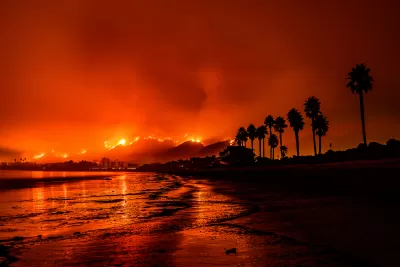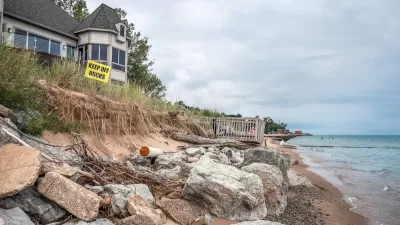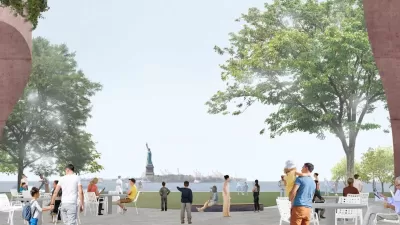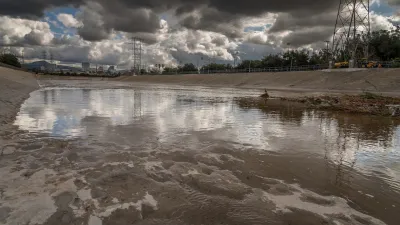Cities around the world are finding ways to protect their residents and infrastructure from the impacts of extreme weather and natural disasters.

In an article for Architecture Daily, Maria-Cristina Florian describes how cities around the world are responding to and preparing for three major types of extreme climate events: flooding, wildfires, and earthquakes.
Florian provides examples of resiliency initiatives from cities facing a variety of threats. In the case of flooding, “Architects and urban planners are now exploring alternatives that rethink stormwater as a resource rather than a hazard, incorporating it into the ecosystem of the city.”
When it comes to wildfires, cities can use mapping to understand high-risk areas. “As peripheric neighborhoods usually have a lower density, they create the ‘wildland-urban interface’ (WUI), an intermediary space typically containing fire fuel, dry material such as fallen leaves. These areas can benefit from the planting of fire-resistant vegetation like low-growing high-moisture plants and hardwood trees with low sap or rising content.” Mitigation strategies also include prescribed burns and building codes that ensure fires are less likely to catch and spread.
To build resilience against earthquakes, “In the areas more prone to seismic activity, structural solutions such as retrofitting with eccentrically braced steel frames, or EBFs, can improve a building’s seismic resilience.”
Florian adds a fourth category: disaster response. “Architects have a role to play, especially in offering fast, efficient, and comfortable solutions for emergency accommodation.” Urban design and architecture can have an effect on how quickly and effectively emergency services can be provided and reached.
FULL STORY: How Can Cities Create Resilience in the Face of Natural Disasters

Trump Administration Could Effectively End Housing Voucher Program
Federal officials are eyeing major cuts to the Section 8 program that helps millions of low-income households pay rent.

Planetizen Federal Action Tracker
A weekly monitor of how Trump’s orders and actions are impacting planners and planning in America.

Canada vs. Kamala: Whose Liberal Housing Platform Comes Out on Top?
As Canada votes for a new Prime Minister, what can America learn from the leading liberal candidate of its neighbor to the north?

Washington State’s Parking Reform Law Could Unlock ‘Countless’ Acres for New Housing
A law that limits how much parking cities can require for residential amd commercial developments could lead to a construction boom.

Wildlife Rebounds After the Eaton Fire
Following the devastation of the Eaton Fire, the return of wildlife and the regrowth of native plants are offering powerful signs of resilience and renewal.

LA to Replace Inglewood Light Rail Project With Bus Shuttles
LA Metro says the change is in response to community engagement and that the new design will be ready before the 2028 Olympic Games.
Urban Design for Planners 1: Software Tools
This six-course series explores essential urban design concepts using open source software and equips planners with the tools they need to participate fully in the urban design process.
Planning for Universal Design
Learn the tools for implementing Universal Design in planning regulations.
Central Transportation Planning Staff/Boston Region MPO
Heyer Gruel & Associates PA
Institute for Housing and Urban Development Studies (IHS)
City of Grandview
Harvard GSD Executive Education
Regional Transportation Commission of Southern Nevada
Toledo-Lucas County Plan Commissions





























